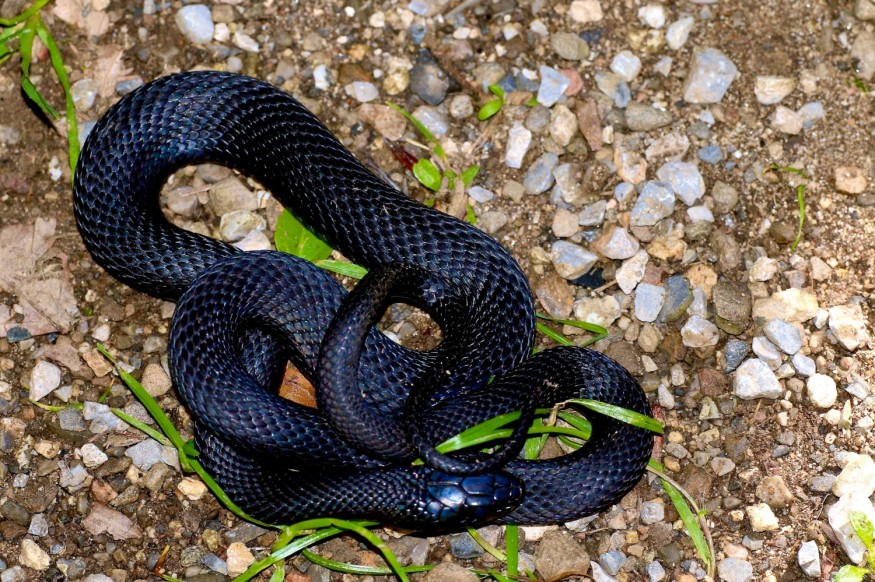
The weather is finally warming up, making it a good time to enjoy the great outdoors. But of course, humans are not the only ones who are excited to enjoy the outdoors as animals too are starting to come out like the rare snake wildlife experts found in Alabama this month.
The rare snake species - the east indigo snake (Drymarchon couperi) - is a threatened species. The Nature Conservancy said that males of this species could grow up to 5.2 feet (1.58 meters), while females on average grow up to 4.5 feet (1.38 meters). Although, some sightings of the east indigo snake reveal that it can grow up to 8 feet (2.4 meters).
Mission Accomplished: Wildlife Officials Celebrate Finding Rare Snake in Alabama for the Second Time in 60 Years
Second East Indigo Snake Found in Alabama in 60 Years
In an official statement via Facebook, officials from the Alabama Department of Conservation and Natural Resources announced that a second young east indigo snake was found in Alabama. The rare snake was discovered on March 16 in the Conecuh National Forest, which marks the second time an east indigo snake has been spotted in Alabama in 60 years.
Wildlife officials said that the indigo project was founded in 2006 and started releasing snakes in 2010 to reintroduce the federally protected species back to the wilds of Alabama, NBC News reported. As a federally protected species, a person needs to secure permits before interacting or handling these snakes.
When they first started the project, the indigo snakes released in Alabama were the captured snakes in the wild in Georgia. The wildlife department aims to release a total of 300 snakes over the years to improve the chances of establishing a viable population of eastern indigo snakes in Alabama.
Reintroducing the species to its native range is a daunting task, and now wildlife officials celebrate each step of the success of their project. The state wildlife department partnered with several collaborators for the indigo project, including the US Forest Service, the US Fish, and Wildlife Service, zoos in Tampa, Florida, and Atlanta, and Auburn University's School of Forestry and Wildlife Sciences.
ALSO READ: Albino Rat Snake Named Pearl Rehomed After Finding It in a Chicken Coop in Western Virginia
The Longest Native Snake in North America
The east indigo snake is an icon in the southern parts of the country and is known to be the longest native snake in North America, according to the Nature Conservancy. Fortunately, this rare snake is non-venomous and safe for humans and pets. They mostly prey on small vertebrates, including snakes, amphibians, mammals, and birds.
These snakes are bluish-black, which turns iridescent purple under the light and has an orange-red chin, side of the head, and throat. The Florida Museum said that east indigo snakes produce 4-14 eggs per year in which hatchlings average 22 inches (55 centimeters) in length. More so, this snake species travel up to three miles during warmer seasons to look for new habitat and prey.
Eastern indigo snakes can be seen in tropical hardwood hammocks, pine flat woods, prairies, scrub, coastal dunes, and edges of freshwater marshes and cypress ponds. They could also be found in agricultural lands, although they are commonly associated with Gopher tortoise burrows where they often stay.
They play a crucial role in keeping the ecosystem healthy and balanced, so when their population was threatened, the State of Florida listed them as endangered species of the state in 1975. It was subsequently listed as federally threatened species by the US Fish and Wildlife Service.
RELATED ARTICLE: Nearly 8ft-Long Snake Found in Georgia Almost Broke National Record; Reptile Deemed Harmless Despite Enormous Size
Check out more news and information on Snakes in Science Times.
© 2025 ScienceTimes.com All rights reserved. Do not reproduce without permission. The window to the world of Science Times.












